SMS Automation in FYDO
Stay connected with your patients effortlessly with the new Automated SMS feature in FYDO!
This feature allows you to automatically send SMSs to patients before and after their admissions, at timeframes that work for you!
– Need to send patients their admission times? Done.
– Need to remind patients to complete their Admission Form? No problem.
– Want to send a Post-Discharge follow-up or request feedback via a Patient Survey? It’s all possible!
We’re here to help you set up this automation. If you have any questions, don’t hesitate to reach out to our friendly team via email or phone!
Email: support@alturahealth.com.au
Phone: (02) 9632 0026
To start using the Automated SMS feature, here’s what you’ll need to have in place:
- An SMS Account: You’ll need an SMS account set up in FYDO. If you’re not sure whether you already have one, contact our team.
- SMS Templates: You’ll need to set up SMS Templates. Detailed instructions are available on our Adding SMS templates – FYDO Wiki
- SMS Automation: Once your templates are ready, you’ll need to set up SMS Automation in the FYDO Settings. Let’s walk through that now!
- Navigate to Settings
- Select SMS Automation
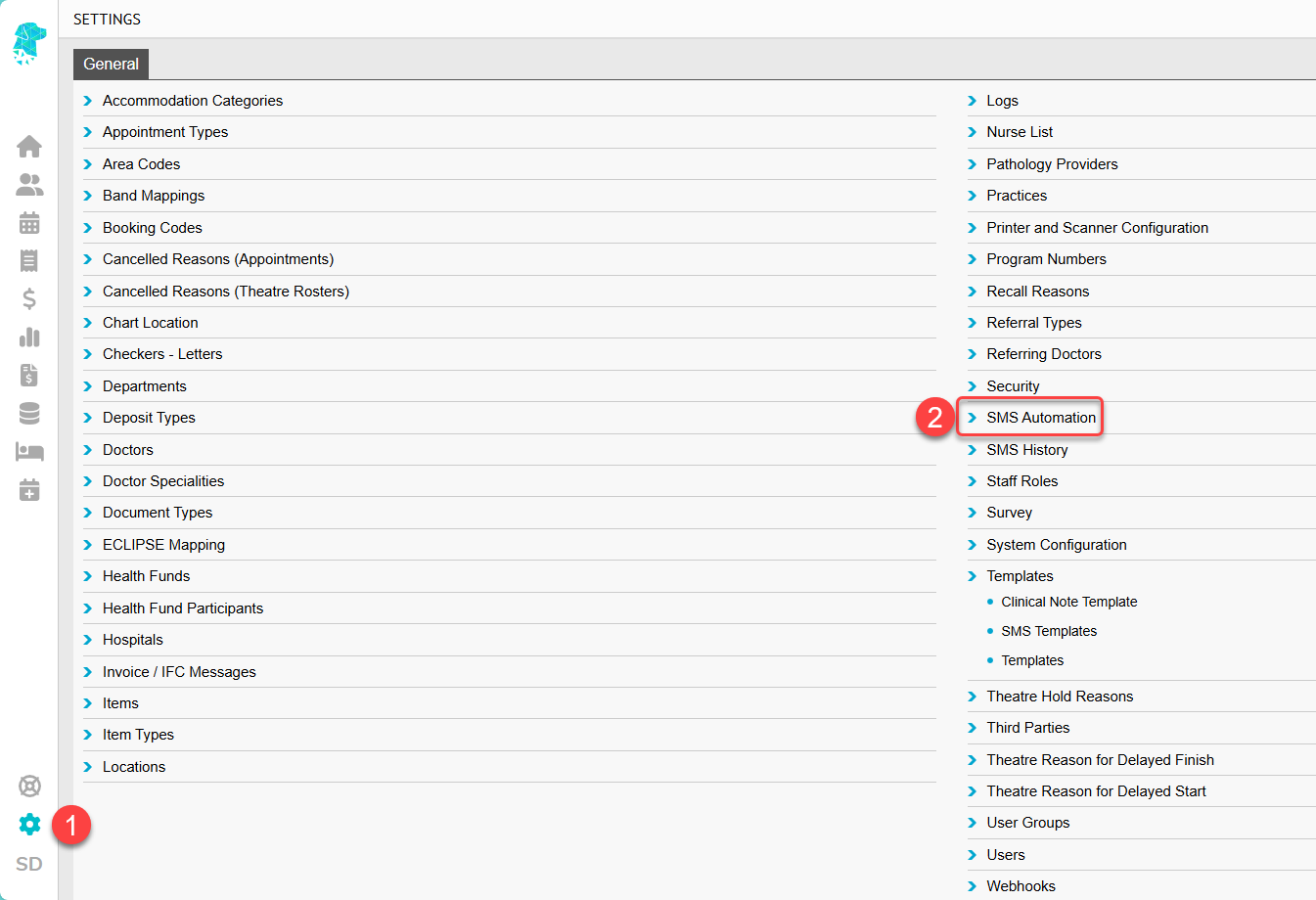
3. Click Add SMS Automation

4. Select the Condition. (We will go into detail on each of the Conditions later in the instructions and explain what field in FYDO governs their status)
5. Select the required Template
6. Select the Number of Days Before or After the episode that you’d like the SMS to be sent
7. Select the Time that you’d like the SMS sent
8. Select the Location for Multi-Location databases. (Single location databases will not need to amend this field)
9. Select the specific Theatre if this Automated SMS is only going to apply to one. Otherwise leave the selection as All Theatres
10. Click Setup Auto SMS
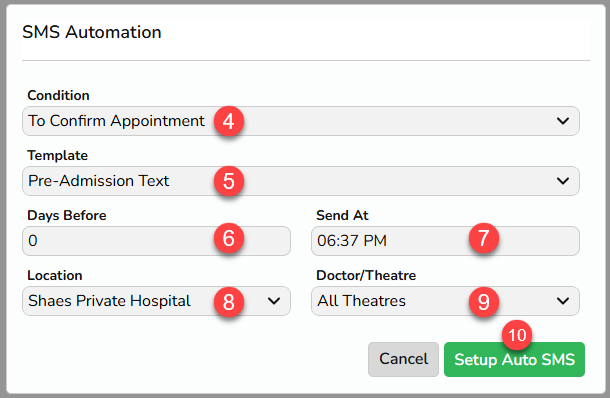
Now we’ll go into detail on the different Condition options available for sending the Automated SMSs.
To Confirm Appointment
This type of SMS automation is triggered by the Confirmed field in the Edit Appointment Screen of each episode. When the Automated SMS Condition is set to To Confirm Appointment this field will be checked before sending, to ensure the message is only sent to appointments that haven’t been confirmed yet.
This is the only Automated SMS type that will reflect the icon on the Appointments Screen.
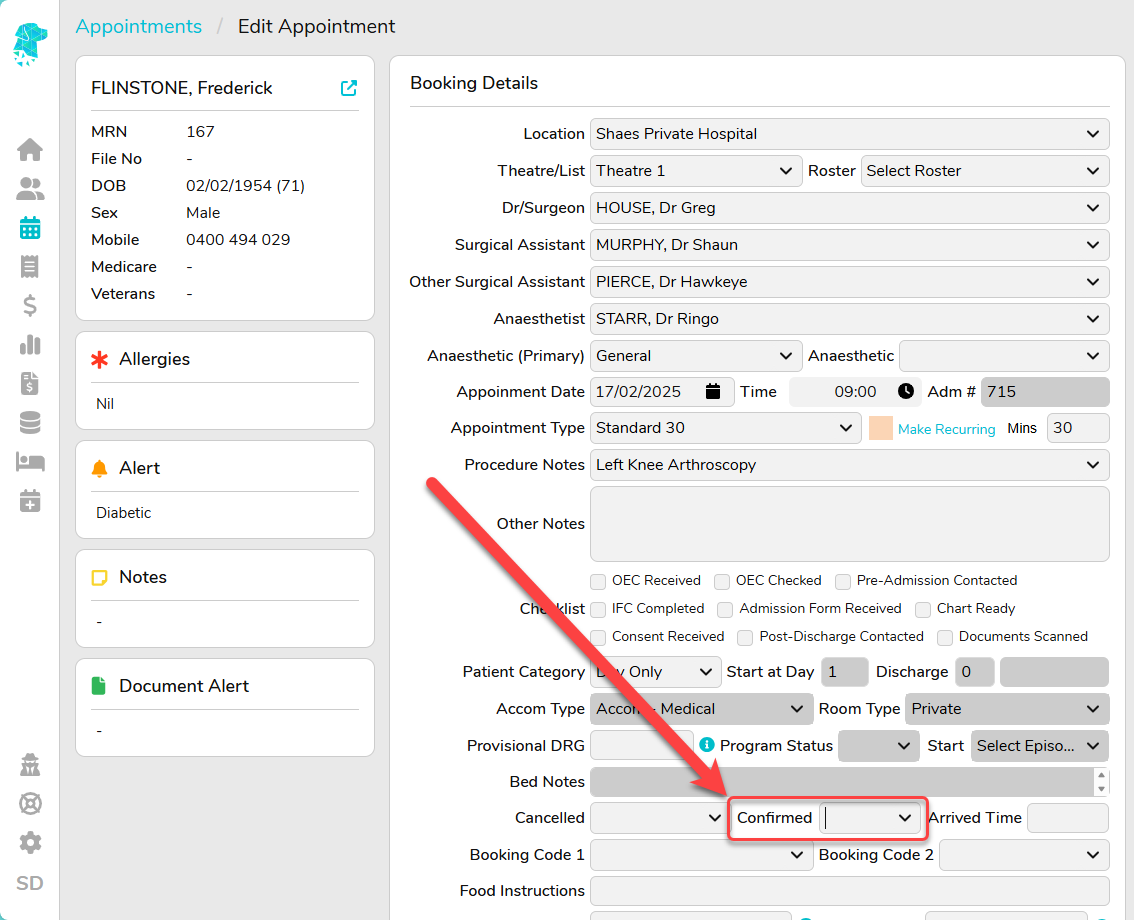
For example, the automated SMS feature will check for appointments scheduled in the next two days that haven’t been confirmed. It will send the selected SMS template at 9am.
For the below example, let’s say today is Monday:
- The system will check all appointments scheduled for Wednesday and send the SMS to those without an entry in the Confirmed field.
- FYDO will also scan for any late additions to appointments within the two-day window to ensure these patients also receive the SMS.
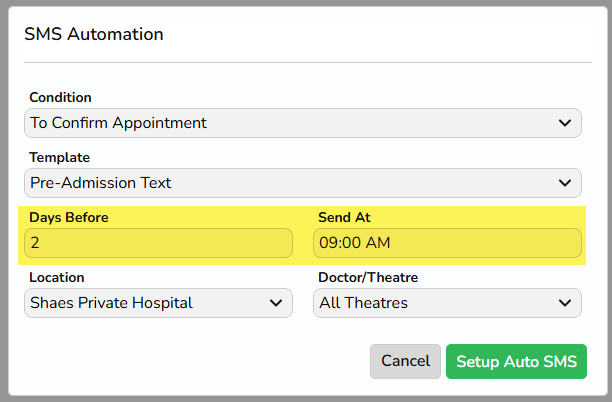
Post Discharge
This SMS automation is based on the Discharge Date. Once an episode is discharged, the SMS will be sent at the designated timeframe after the discharge date.
For example, if today is Monday and a patient is discharged at 1pm, they will receive the automated Post Discharge SMS one day after their discharge date. In this case, the SMS will be sent on Tuesday at 9am.

Admission Form Not Received
This automated SMS is triggered based on the Admission Form Received Check List item. If the checkbox is marked for a patient’s admission, they will not receive the automated SMS. This means the SMS will only be sent to patients who have not yet completed their admission form!
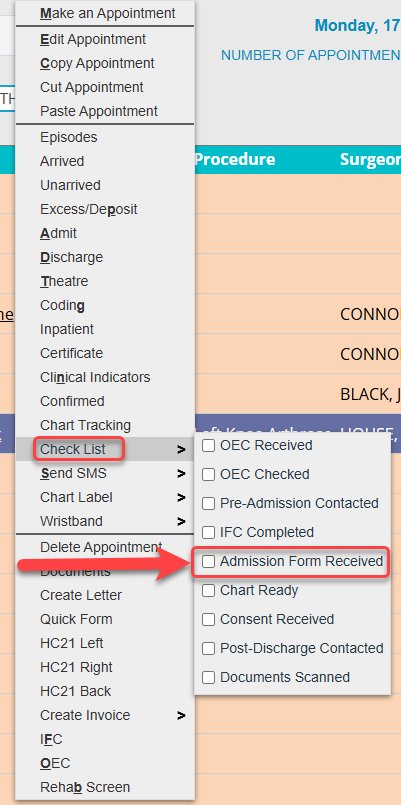
With the check box now automatically ticked when patients completed Online Preadmit Paperwork is committed, following up with patients who still need to complete this task has never been easier!
For the below example, if a patient is booked for Monday, they will receive their Admission Form Not Received reminder on Sunday at 8am, the day before their scheduled admission.
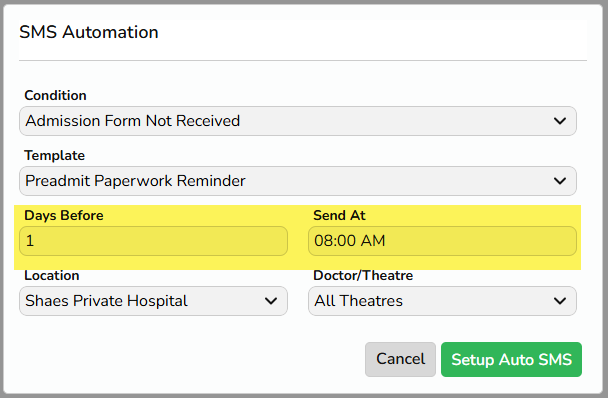
Keep in mind, you can set up multiple SMS Automations! So, if you want to remind patients every day until they submit their admission form, you can easily do that!
And again, we’re here to help you set up this automation. If you would like assistance with getting this feature up and running for your facility, please don’t hesitate to reach out to our friendly team via email or phone!
Email: support@alturahealth.com.auy
Phone: (02) 9632 0026
Let’s look at a demo setup for streamlining patient communication! Automating these SMS reminders can really help improve patient engagement and reduce the administrative burden on staff. Here’s an example of how it can work and why it’s effective:

- Online Pre-Admission Form Link (4 days before admission)
This gives patients a head start in completing their required paperwork. The fact that it only contacts those who haven’t already submitted the form is a great way to avoid unnecessary follow-ups and potential annoyance for patients who are already on top of their forms. - Follow-Up Reminder for Admission Forms (2 days before admission)
A reminder just before the deadline to submit the form ensures that those who missed the first notification get another nudge, but again, it avoids bothering anyone who’s already completed the form. A gentle follow-up can help improve compliance. - Pre-Procedure Confirmation (1 day before admission)
This is crucial for making sure patients are prepared with all the details – admission time, fasting instructions, what to do when they arrive, and appointment confirmation. It helps patients feel more confident and organized the day before their procedure. - Post-Discharge Check-In (1 day after discharge)
Checking in on patients after they leave the hospital can show that you care about their recovery, making them feel supported and giving you an opportunity to catch any concerns early. Helping you meet your post-discharge obligations. - Patient Survey Link (5 days post-discharge)
Asking for feedback via a patient survey is a great way to gather insights on their experience and identify any areas for improvement. Giving them a little time to settle into their recovery before asking for feedback might result in more thoughtful responses. Automating this follow up ensures all patients are given the opportunity to participate in providing feedback.